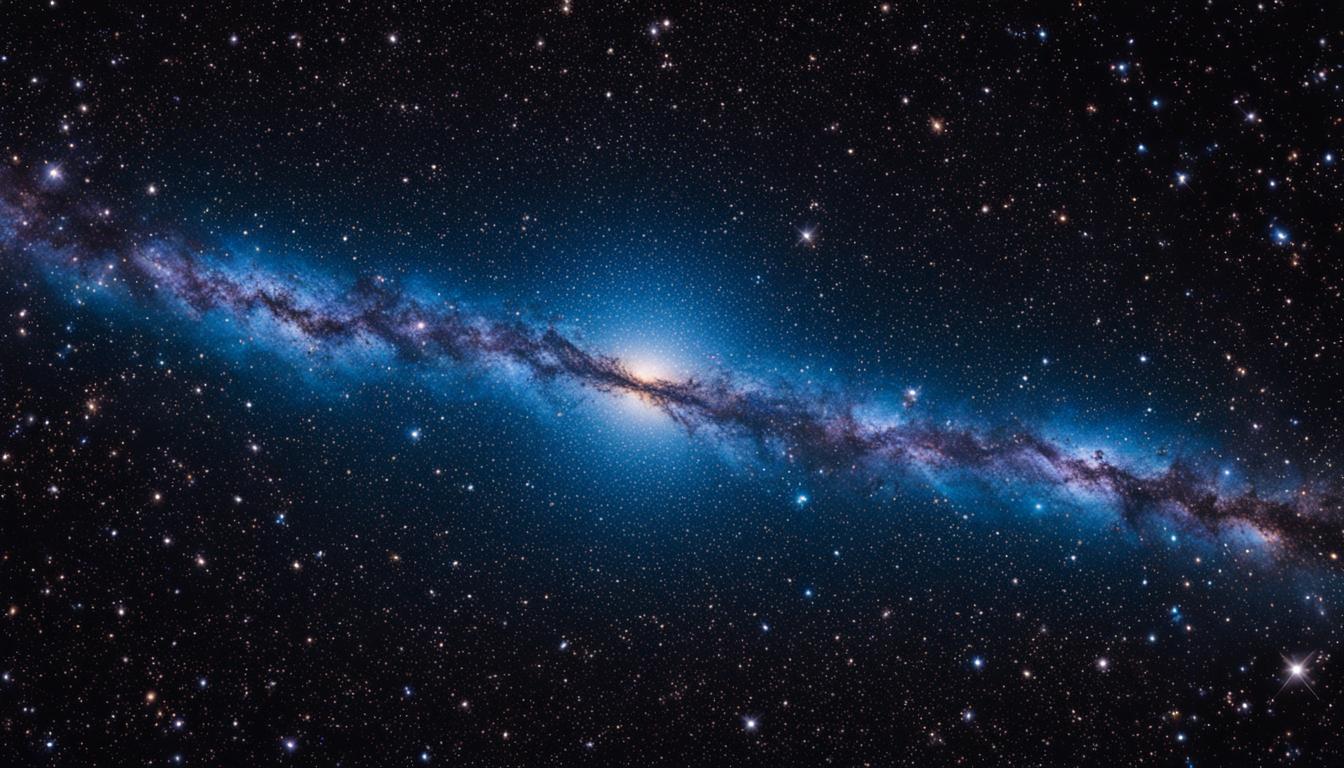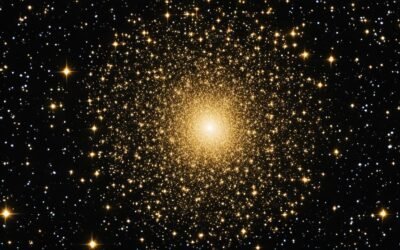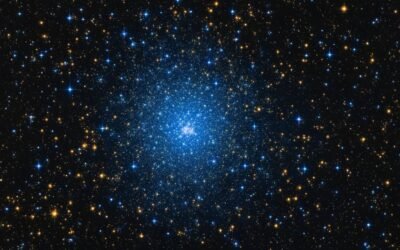Welcome to an exploration of Messier 73, a captivating asterism nestled within the vast expanse of the Aquarius constellation. Discover the fascinating story behind this enigmatic star cluster, its historical significance, and the ongoing debates about its true nature.
Messier 73, also known as M73, is a unique configuration of four stars that caught the attention of renowned astronomer Charles Messier in 1780. Initially believed to be a star cluster with nebulosity, subsequent observations by John Herschel revealed the absence of any nebulosity, casting doubt on its classification.
Situated in the southern region of the Aquarius constellation, close to the Capricornus border, locating Messier 73 presents a thrilling challenge for stargazers. Its proximity to the globular cluster Messier 72 adds to its allure, making it a fascinating target for enthusiasts armed with larger binoculars or a 4-inch telescope.
As the discovery of Messier 73 stirred the curiosity of the astronomical community, debates ensued regarding its true nature. While initially thought to be a sparsely populated open cluster, further analysis revealed that the four stars forming M73 are not physically related and exist at varying distances from Earth. Consequently, it was affirmed that Messier 73 is indeed an asterism, an arrangement of stars by chance alignment.
Key Takeaways:
- Messier 73 is an intriguing asterism consisting of four stars located within the Aquarius constellation.
- Discovered by Charles Messier in 1780, it was originally believed to be a star cluster with nebulosity, but subsequent observations disproved this claim.
- Messier 73 poses a challenge for stargazers due to the faintness of the Aquarius constellation and is best observed during the summer using larger binoculars or a 4-inch telescope.
- Studies and high-resolution spectroscopic analysis have confirmed that the stars within M73 are not physically related, solidifying its classification as an asterism.
- Messier 73 has multiple catalog designations, including M73, NGC 6994, Cr 426, and OCl 89, reflecting the ongoing debates about its nature.
The Challenging Search for Messier 73
Messier 73, a celestial object located in the southern part of the Aquarius constellation, presents a challenging endeavor for astronomers and stargazers alike. Situated near the border with Capricornus, this elusive object lies approximately 1.5 degrees east of the well-known globular cluster Messier 72.
However, due to the faintness of the Aquarius and Capricornus constellations, locating Messier 73 in the night sky can be quite arduous. Its elusive nature makes it one of the more challenging Messier objects to find.
In order to increase your chances of observing Messier 73, it is recommended to turn your attention to the night sky during the summer months. Larger binoculars or a 4-inch telescope can greatly assist in capturing this celestial gem that has puzzled astronomers for centuries.
By employing these tools and focusing your efforts on the outlined celestial coordinates, you can embark on an extraordinary journey to catch a glimpse of Messier 73.
The Nature of Messier 73: Asterism or Cluster?
The nature of Messier 73 has been a subject of debate among astronomers. Initially thought to be a sparsely populated open cluster, it was later determined to be an asterism. Various studies have suggested different conclusions regarding its nature, with some indicating that M73 is an old open cluster and others suggesting that it is merely a chance alignment of stars. High-resolution spectroscopic analysis of the six brightest stars within M73 revealed that they were not physically related, further supporting the conclusion that M73 is an asterism.
The Location and Appearance of Messier 73
If you’re trying to locate Messier 73 (M73), you’ll find it in the southern part of the Aquarius constellation, close to the border with Capricornus. Specifically, it is positioned about 1.5 degrees east of the renowned globular cluster, Messier 72.
The appearance of Messier 73 is unique and intriguing. It consists of four stars that form a distinct Y-shaped pattern, occupying an area of 2.8 arc minutes of apparent sky. The apparent magnitudes of these stars range from 10.48 to 11.94, making them relatively faint.
To observe Messier 73, a 4-inch telescope is recommended as it allows for a clearer view of the Y-shaped arrangement. While it may not be easily discernible with binoculars, the use of a telescope unveils the fascinating structure of this asterism.
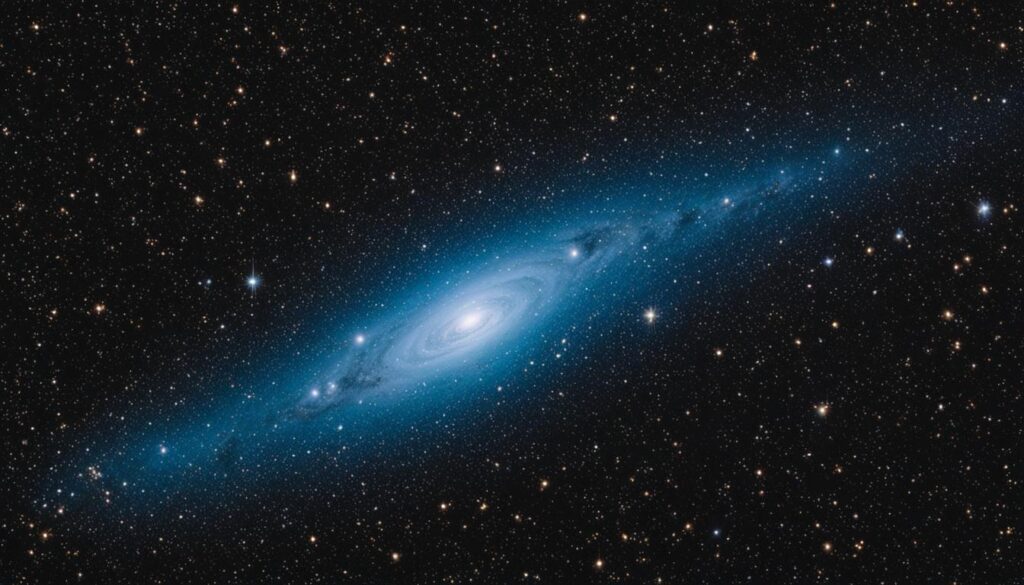
| Object | Location | Appearance |
|---|---|---|
| Messier 73 | Southern part of Aquarius constellation | Y-shaped pattern of four stars |
| Messier 72 | Eastern border of Aquarius constellation | Globular cluster |
Historical Observations and Debates about Messier 73
Messier 73, initially discovered by Charles Messier in 1780 and added to his catalogue as object number 73, has been the subject of ongoing debates among astronomers. Messier initially described it as a cluster of three or four small stars with some nebulosity. However, subsequent observations by William and John Herschel failed to detect any nebulosity, leading to questions about the nature of M73.
The debate surrounding Messier 73 continued, with some astronomers suggesting that it might be a cluster remnant while others argued that it was an asterism. These differing opinions sparked further research and analysis to determine the true nature of M73.
“Messier 73 is an intriguing celestial object that has captivated astronomers for centuries. Its enigmatic nature and the diverse interpretations surrounding it have fueled discussions and investigations, adding to the rich tapestry of astronomical knowledge.”
Uncovering the truth about Messier 73 required careful observations and analysis. Through subsequent studies and advancements in technology, it became clear that the stars within M73 were not physically related. As a result, the consensus shifted towards considering Messier 73 as an asterism rather than an open cluster. Although it is not officially recognized as a Messier object due to its uncertain nature, M73 continues to intrigue astronomers and inspire further research in the field of astronomy.
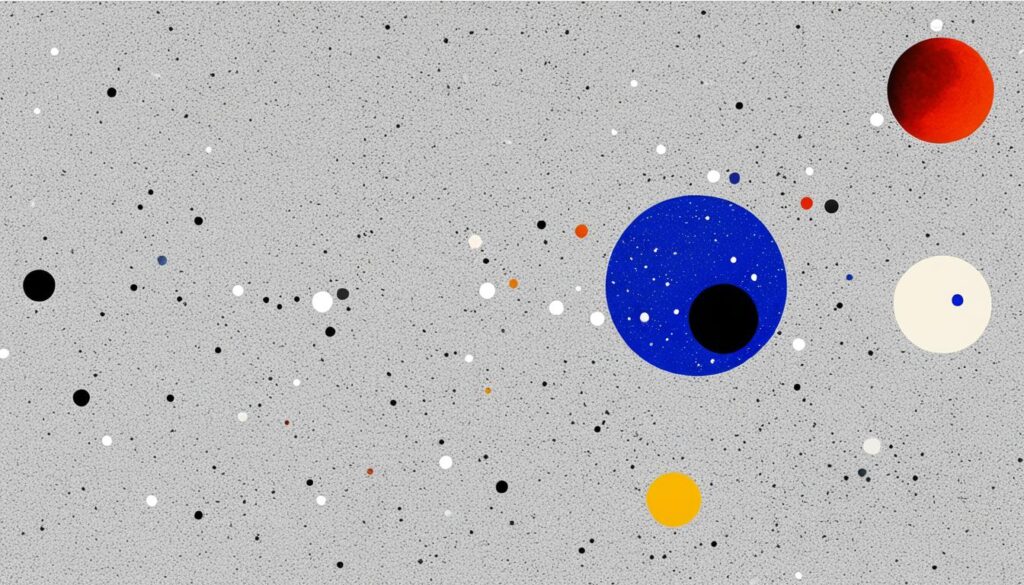
The Debate Resolved: Messier 73 as an Asterism
The controversy surrounding the nature of Messier 73 has finally been put to rest through a groundbreaking high-resolution spectroscopic analysis of the six brightest stars within this intriguing celestial object.
Contrary to previous beliefs, the analysis revealed that the stars in Messier 73 are not physically related to each other and are moving in different directions. This crucial finding definitively established that Messier 73 is, in fact, an asterism and not an open cluster as initially thought.
While Messier 73 is not officially recognized as a Messier object due to its uncertain nature, it continues to captivate astronomers with its enigmatic characteristics. The study of sparsely populated open clusters, such as Messier 73, offers valuable insights into the gravitational forces at work within the Milky Way.
Breakthrough Spectroscopic Analysis of Messier 73
The high-resolution spectroscopic analysis of the six brightest stars within Messier 73 provided compelling evidence that these stars are not gravitationally bound to each other and are moving independently. This discovery led to the conclusive determination that Messier 73 is an asterism, consisting of a chance alignment of unrelated stars.
Messier 73 poses intriguing questions about the formation and evolution of stellar systems. The observation and analysis of similar objects can shed light on the dynamics of sparsely populated open clusters, further enhancing our understanding of the intricate forces shaping our galaxy.
Despite its unresolved designation, Messier 73 serves as a reminder of the ongoing mysteries in the field of astronomy. The unique properties of this asterism continue to inspire further research and exploration, fueling the curiosity of astronomers as they strive to uncover the secrets of the cosmos.
The Catalog Designations of Messier 73
Messier 73, discovered by Charles Messier in 1780, has garnered several catalog designations over the years. These designations reflect the ongoing debates and varying interpretations of its nature in the astronomical community. Let’s explore the different catalog designations of Messier 73.
Messier 73 (M73)
Messier 73 was assigned the designation M73 in Charles Messier’s renowned catalogue. The four stars that form M73 were initially believed to be a cluster, but further observations challenged this assumption. Nevertheless, its inclusion in Messier’s catalogue solidified its significance as an object of interest in the night sky.
New General Catalogue (NGC 6994)
To further understand the nature of Messier 73, it was added to the New General Catalogue as NGC 6994. This catalogue documents a wide range of deep-sky objects, including galaxies, nebulae, and star clusters. NGC 6994 allows astronomers to systematically study and classify celestial objects.
Catalogue of Star Clusters and Associations (Cr 426)
Another catalog designation for Messier 73 is Cr 426. This designation comes from the Catalogue of Star Clusters and Associations compiled by Paul Herbst in 1952. It provides a comprehensive inventory of star clusters and associations, aiding astronomers in studying the structure and evolution of stellar systems.
Open Cluster Catalogue (OCl 89)
In the Open Cluster Catalogue, Messier 73 is identified as OCl 89. This catalogue focuses on open clusters, which are loosely bound groups of stars that share a common origin. OCl 89 highlights the continued interest in understanding the intricate dynamics and formation processes of open clusters.
In conclusion, Messier 73 is known by various catalog designations, reflecting the ongoing discussions and evolving understanding of its nature. These designations, including M73, NGC 6994, Cr 426, and OCl 89, ensure its recognition and facilitate focused research on this captivating celestial object. Keep exploring and unraveling the mysteries of Messier 73, as it holds valuable insights into our vast universe.
The Mysteries of Messier 73 and Astronomical Research
While Messier 73 has been determined to be an asterism, further analysis of similar objects is important for the identification of sparsely populated open clusters. Studying such clusters can provide insights into the effects of gravitational forces in the Milky Way and contribute to our understanding of the sources of these forces. Messier 73 serves as a reminder of the ongoing mysteries and discoveries in the field of astronomy.
The Importance of Studying Sparsely Populated Open Clusters
Sparsely populated open clusters, like Messier 73, offer a unique opportunity to observe the dynamics within the Milky Way. By studying these clusters, astronomers can gain valuable insights into the way gravitational forces shape our galaxy. These forces are responsible for a wide range of astrophysical phenomena, including the formation and evolution of stars, the distribution of dark matter, and the dynamics of galactic structures.
Understanding the sources and effects of gravitational forces is essential for unraveling the mysteries of the universe. By carefully analyzing the properties and characteristics of sparsely populated open clusters, scientists can refine their understanding of these forces and contribute to our overall knowledge of the cosmos.
Implications for Current and Future Research
While Messier 73 may not be an open cluster in the traditional sense, its study has significant implications for astronomical research. By investigating similar objects, astronomers can identify and categorize sparsely populated open clusters more accurately. This, in turn, strengthens our understanding of the underlying gravitational forces within the Milky Way.
Messier 73: A Window to the Unknown
As we delve deeper into the mysteries of Messier 73 and similar celestial objects, we uncover new questions and potential avenues for exploration. The enigmatic nature of Messier 73 invites astronomers to push the boundaries of our knowledge and investigate the complexities of the universe.
| Key Points | Summary |
|---|---|
| Messier 73 | An asterism rather than an open cluster |
| Sparsely Populated Open Clusters | Insights into gravitational forces in the Milky Way |
| Future Research | Categorizing sparsely populated open clusters |
As we continue to unlock the mysteries of Messier 73 and similar celestial objects, the field of astronomy deepens its understanding of the universe and reaffirms its commitment to discovery and exploration.
Summary and Final Thoughts on Messier 73
Messier 73 is a fascinating celestial object that challenges our understanding of star clusters and asterisms. Discovered by Charles Messier in 1780, it has captured the attention of astronomers throughout history. Originally believed to be a cluster of four stars with nebulosity, further observations revealed that the stars in Messier 73 are not physically related and lie at different distances from Earth. This led to the conclusion that Messier 73 is an asterism rather than an open cluster.
Despite its uncertain nature, Messier 73 continues to intrigue astronomers and offers opportunities for further research and exploration. It is located in the southern part of the Aquarius constellation, near the border with Capricornus, and is best observed during the summer using larger binoculars or a 4-inch telescope. While not officially recognized as a Messier object, it serves as a reminder of the ongoing mysteries and discoveries in the field of astronomy.
As we delve deeper into the mysteries of Messier 73, it is important to remember that our understanding of the universe is constantly evolving. While it may not fit neatly into established categories, Messier 73 provides valuable insights into the complexities of our cosmos. By studying similar objects and conducting high-resolution spectroscopic analysis, we can continue to expand our knowledge of star clusters and their behavior.
In conclusion, Messier 73 is a captivating celestial object that invites us to question and explore. Its discovery by Charles Messier, the debates surrounding its nature, and its ultimate identification as an asterism rather than a cluster highlight the ever-evolving nature of scientific inquiry. As we gaze at the images of Messier 73 and ponder its mysteries, we are reminded of the boundless wonders that await our continued exploration of the universe.
FAQ
What is Messier 73?
Messier 73 (M73) is an asterism consisting of four stars located in the constellation Aquarius.
Who discovered Messier 73?
Messier 73 was discovered by Charles Messier in 1780.
What is the nature of Messier 73?
Messier 73 is an asterism, which means that the four stars it consists of are not physically related.
Where is Messier 73 located?
Messier 73 is located in the southern part of the Aquarius constellation, near the border with Capricornus.
How can I observe Messier 73?
Messier 73 is best observed during the summer using larger binoculars or a 4-inch telescope.
What did Charles Messier initially describe Messier 73 as?
Charles Messier initially described Messier 73 as a cluster of three or four small stars with some nebulosity.
What resolved the controversy about the nature of Messier 73?
A high-resolution spectroscopic analysis of the six brightest stars within Messier 73 confirmed that they were not physically related, resolving the debate.
What catalog designations does Messier 73 have?
Messier 73 has several catalog designations, including M73, NGC 6994, Cr 426, and OCl 89.
Why is studying Messier 73 important?
Studying Messier 73 and similar objects can provide insights into sparsely populated open clusters and the gravitational forces in the Milky Way.
What is the significance of Messier 73?
Messier 73 is a fascinating celestial object that challenges our understanding of star clusters and asterisms.




